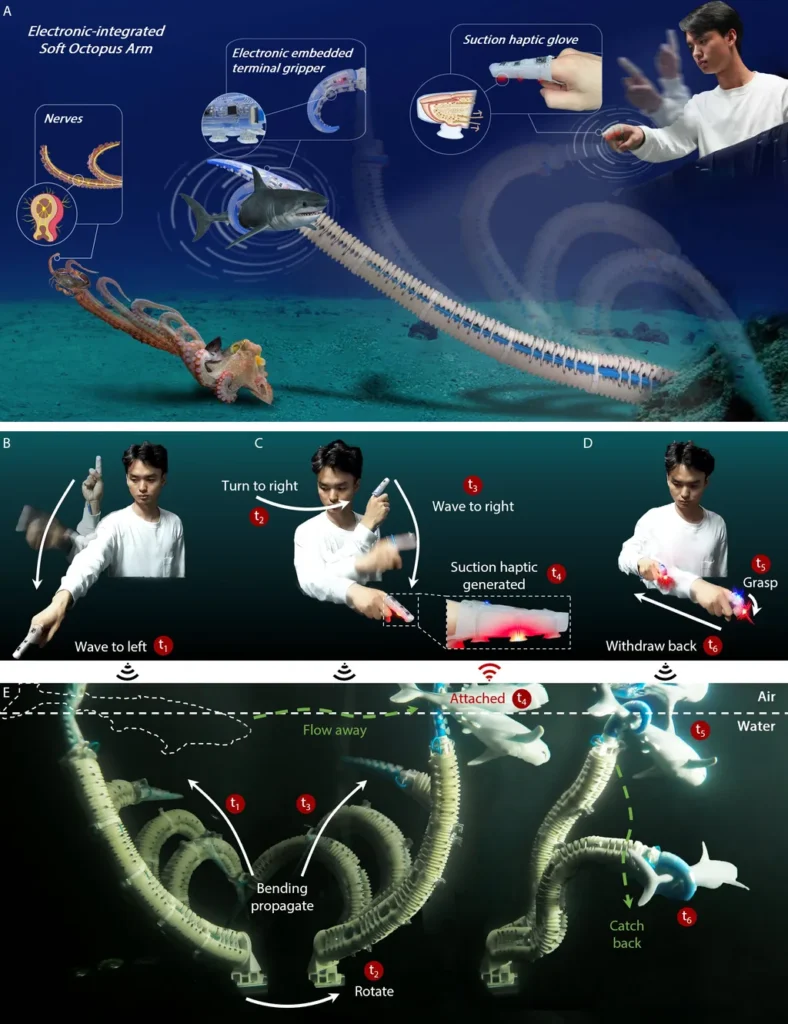In a groundbreaking study published in the journal ‘Materials & Design’ (translated from Dutch), researchers have taken a page from the octopus’s playbook to create a new kind of artificial muscle that could revolutionize soft robotics and wearable technologies. Vera Gesina Kortman, a researcher from the Department of Maritime and Transport Technology and the Department of BioMechanical Engineering at Delft University of Technology in the Netherlands, led the team that developed these innovative McKibben Artificial Muscles (AMs).
So, what’s the big deal? Well, imagine a muscle that can twist, extend, and contract all on its own, without needing a complex control system. That’s exactly what Kortman and her team have created. They’ve designed these muscles to have different braiding angles along their length, which allows them to move in different ways depending on where you look. It’s like having a Swiss Army knife of muscles – one tool, multiple functions.
Kortman explains, “By spatially varying the braiding angle along the actuator, we demonstrate embedded capabilities for local extension and contraction within a single AM.” In plain English, this means that the muscle can stretch and shrink in different places, all controlled by its physical structure. Plus, by using a mismatch in braiding angles between opposing wire sets, the team was able to generate a twisting motion. It’s like having a built-in wrench that can tighten or loosen nuts and bolts just by changing the angle of its braid.
But why does this matter for maritime professionals? Well, think about all the moving parts on a ship or an offshore platform. There are cranes, winches, and all sorts of machinery that require precise control. With these new artificial muscles, it might be possible to create more compact and adaptable actuation systems that can handle a wide range of tasks. Plus, because they’re made of soft materials, they’re less likely to cause damage if they come into contact with other equipment or people.
Kortman envisions applications ranging from wearable technologies like exoskeletons and prosthetics to bioinspired systems like artificial hearts or continuum robotic arms. “These results highlight the potential of mechanically intelligent AMs to simplify actuation systems in soft robotics,” she says. And while these applications might not be directly related to the maritime industry, the underlying technology could still have a big impact.
For example, imagine a robotic arm that can be used for underwater inspections or repairs. With these new artificial muscles, the arm could be made more compact and adaptable, allowing it to navigate tight spaces and perform a wider range of tasks. Plus, because the muscles are made of soft materials, they’re less likely to cause damage to delicate equipment or marine life.
Of course, there are still challenges to be overcome. The team’s prototype only achieved a maximum strain of +0.06 and a minimum strain of -0.19, which means there’s still room for improvement in terms of performance. But given the potential benefits, it’s clear that this is an area worth watching.
So, what’s next for these innovative artificial muscles? Kortman and her team are already hard at work on new designs and prototypes, exploring the full range of possibilities. And with any luck, we’ll see these muscles making waves in the maritime industry before too long. After all, as Kortman puts it, “The ocean is a harsh environment, and we need tools that can adapt to its challenges.”

